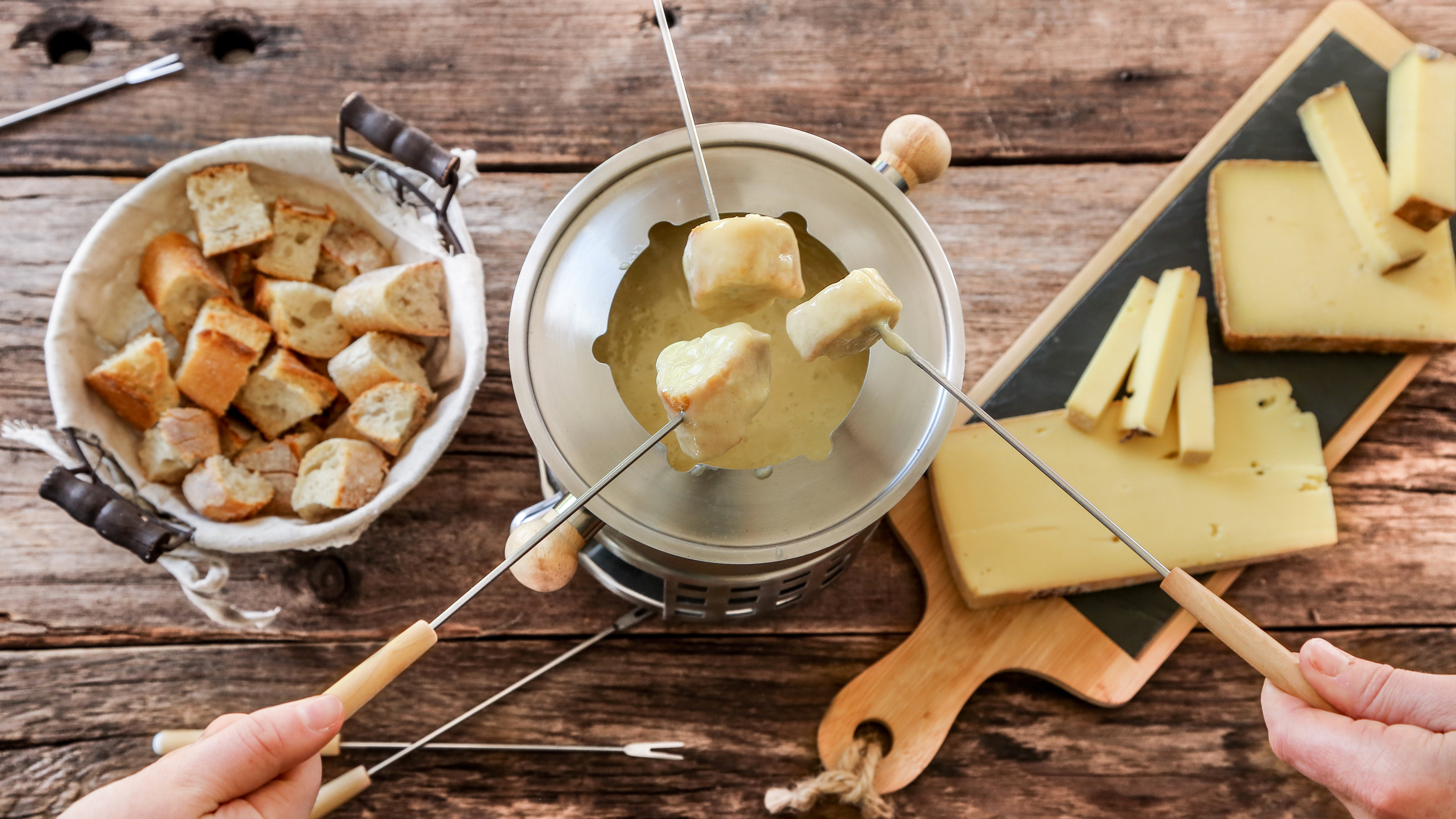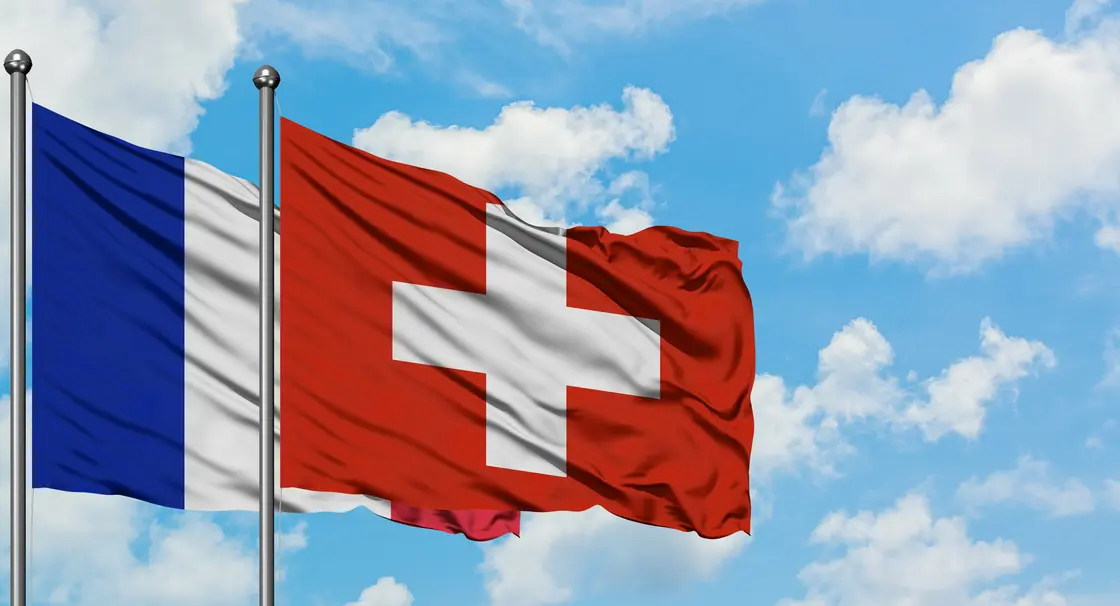If the train’s about to leave...
You have just enough time to take on board five key facts about fondue and decide who is the victor in this major culinary battle
A few answers in this age-old debate
- Fondue is said to be a Swiss dish
- But it was appropriated by the people of Savoy, in France
- It is not known exactly when this dish was invented
- But the first mention of the word fondue dates back to 1825
- What differentiates the two fondues are the cheeses used to make them
To find out more and show off your knowledge of Franco-Swiss culture to your friends and family, let’s get stuck into the story as the train gets under way, the conductor makes the final checks and the latecomers rush on to the platform.


Just five minutes to make your mouth water...
Fondue is said to be a Swiss dish.
That’s not just according to us – the dictionary says so, too. And you can’t really argue with Larousse, can you? So, fondue is of Swiss origin.
We could end the debate right there but instead, let’s take a deeper dive into the various stages of the dish’s history.
First stop, the Iliad. Yes, Greece and, indeed, Antiquity. Homer himself mentions a dish of melted goat’s cheese, Greek wine and flour. It’s far from the fondue we know today, but there’s a strong resemblance.
Second stop, 1651 and the kitchens of Monsieur François Pierre de la Varenne, who published an eponymous cookbook, Le Cuisinier François, in which he included a recipe involving melted cheese and bread, which he called ‘ramekin of cheese’. So far, so French.
Third stop, finally in Switzerland, a little later, in 1699. This time, Albert Hauser wrote a comprehensive work on cooking cheese with wine. The book, appropriately titled Pour cuire le fromage avec du vin (‘How to cook cheese with wine’), brought us eminently closer to the fondue we know today.
Last stop – France. Yes, that may seem surprising, but keep reading. This story is full of twists and turns, connections and, of course, cheese. In 1825, the word ‘fondue’ appeared in a book by the well-known Anthelme Brillat-Savarin. Yes, another story about delicious cheese. He published Physiologie du goût (‘The Physiology of Taste’), in which fondue is mentioned for the first time. But does that make the dish French? No, not at all. The author himself said definitively that the dish is Swiss: ‘Fondue is originally from Switzerland (...) It is a healthy dish, savoury, appetising, quick to make and always ready to serve to unexpected guests.’ Can’t argue with that.
The modern-day recipe, as we know it, first appeared in 1885 in a Zurich cookbook. So, in Switzerland.
Why, then, is there ‘fondue savoyarde’?
One thing we didn’t tell you about the famous Larousse mentioned earlier in the article is that, three lines further down, the same definition also refers to ‘fondue savoyarde’. Oops. We were getting on so well, having established just a minute ago that fondue is, indeed, Swiss.
What we can say today is that this recipe developed in the border region. Let’s not forget that Savoy used to be part of Switzerland, so perhaps the debate over which of them can lay claim to fondue is misplaced. After all, at the time the dish was created, both places were part of the same territory.
The difference between Swiss and Savoyard fondue ultimately comes down to the cheeses used. Abondance, beaufort, gruyère, vacherin – which to choose? Here’s a little help.
In Switzerland, you’ll find different types of fondue depending on the canton:
- There’s the famous moitié-moitié (half-and-half): 50% gruyère, 50% vacherin
- Fribourg fondue: 100% vacherin – end of.
On the French side, the Savoy version is made with a combination of three cheeses:
- beaufort d’alpage (40%)
- abondance (40%)
- gruyère de Savoie (20%)
Our advice? Try them all! You don’t want to miss out on your favourite.

